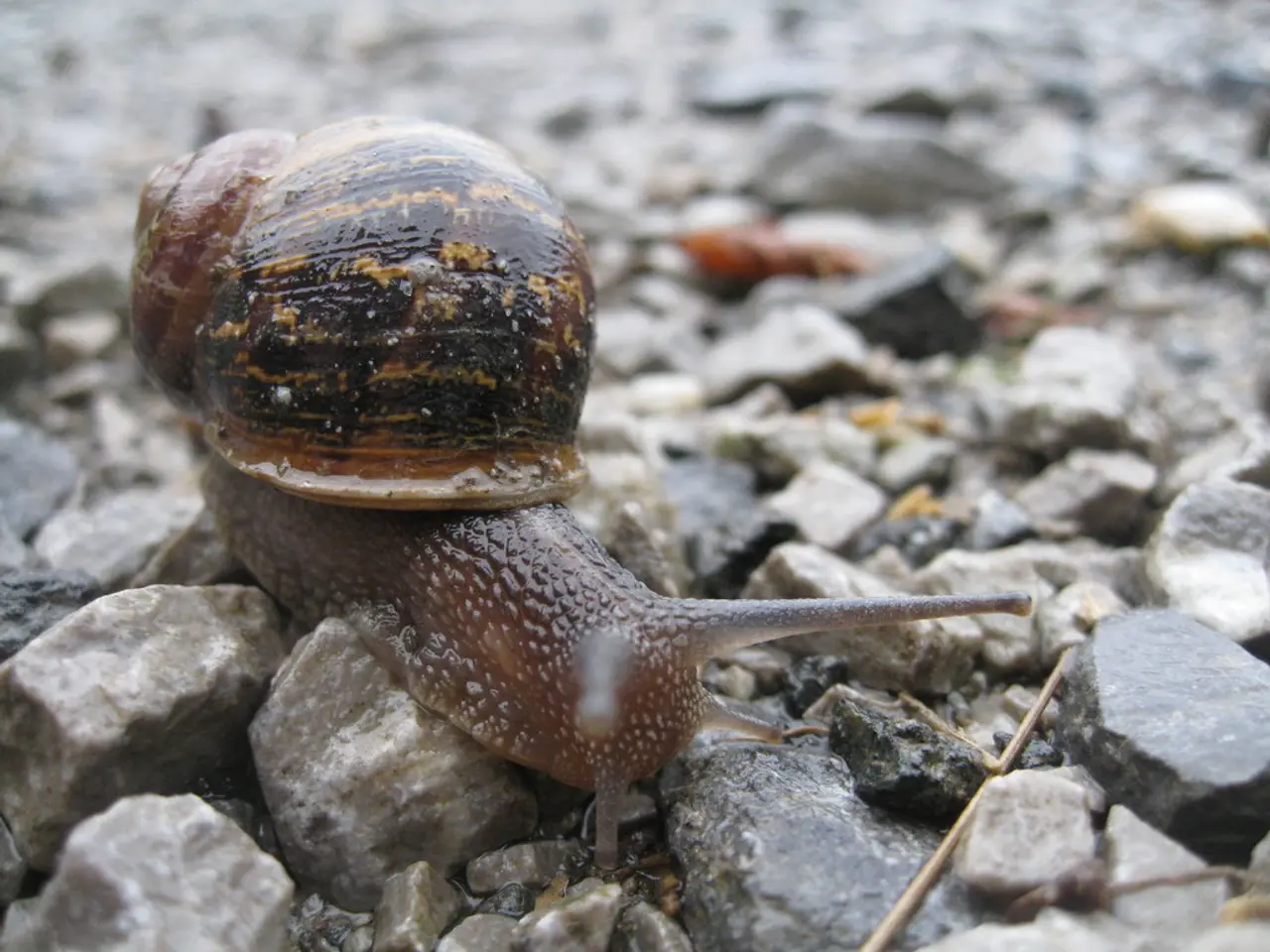Discovered in a cave in northern Vietnam, the minuscule shells of the Angustopila psammion land snail, positioned alongside a standard ballpoint pen, showcase their minute size.
In the world of tiny organisms, there's always more to discover. Two new land snail species, Angustopila psammion and A. coprologos, have been found, making them the smallest known land snails on Earth.
The search for these minuscule creatures began with sediment samples collected during two expeditions to Southeast Asia. The new record-holder, Angustopila psammion, was discovered in a cave in northern Vietnam, with a shell measuring a mere 0.6 millimeters in diameter. Its scientific name, derived from the ancient Greek word for "grain of sand", perfectly encapsulates its tiny size.
A. coprologos, found in a limestone gorge in northern Laos, is ever so slightly larger than A. psammion. Its shell is covered with pointy projections and mudlike beads, which are believed to be fecal pellets.
While these snails are the smallest known land snails, the absolute smallest documented species is Microphreatus saltillensis, a freshwater snail discovered in a groundwater-fed spring in Los Chorros, Coahuila, northern Mexico. This snail has an extraordinarily small shell width of about 0.73 mm, making it likely the world’s smallest known freshwater gastropod [1].
The details of the biology of the newfound snails remain mysterious, as they were only found as shells in the samples. However, researchers are eager to learn more about them, such as what they eat and what eats them. It's thought that these tiny creatures may elude predators by hiding in cracks within sediment and rock, or on root surfaces. They likely eat tiny microbes, detritus, and perhaps bits of fungus.
The risk of drying out may limit the evolution of the smallest land snails to regions with stable climates or specific habitats, such as caves. Snails are prone to drying out since they must extend their moist bodies outside their shells to move around. As size decreases, the ratio of the body's surface area to volume goes up, making water evaporation more likely.
The discovery of these snails emphasizes the importance of taxonomy, the process of describing new species and where they fit into the tree of life. It also highlights the vast amount we still have to learn about the smallest organisms on our planet.
[1] Source: https://www.nature.com/articles/s41598-021-95674-8
- The world of tiny organisms offers endless opportunities for adventure in natural history.
- The Earth is home to a myriad of species, some microscopic like the newly discovered land snails, Angustopila psammion and A. coprologos.
- In the realm of science, the search for these minute creatures often involves expeditions to distant habitats like Southeast Asia.
- The study of these tiny beings can provide insights about health-and-wellness and fitness-and-exercise, given their unique adaptations to survive.
- Sports enthusiasts might find a connection in mixed-martial-arts, where the essence of overcoming adversity mirrors the struggle of these small species to survive.
- As climate change continues to alter our planet, understanding the habits and habitats of these small creatures is crucial for their survival and the preservation of Earth's biodiversity.
- The ongoing exploration and classification of these minuscule species highlight the importance of adhering to the principles of taxonomy and connecting the dots in the tree of life, ensuring a comprehensive understanding of our planet's natural history.




